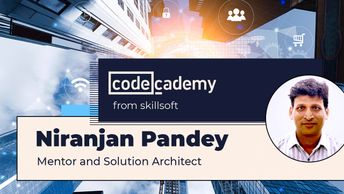An aspiring cloud engineer needs to learn how to build upon DevOps architecture design fundamentals to formulate robust and sound container clustering strategies.
In this course, you'll recall the concept of clustering and outline the different cluster architectures for failover and load balancing support. You'll outline what comprises a clustering topology, physical and virtual clusters, and enterprise application cluster management. You'll then name clustered environment resource managers, application containerization types, and containerized cluster implementation solutions.
Next, you'll examine data center cluster virtualization and investigate hybrid cloud cluster architectures for multi and hybrid cloud solution delivery. You'll explore clustering in Docker, Kubernetes, and Docker Swarm. Lastly, you'll set up single control-plane Kubernetes clusters, Docker Swarm clusters for high availability, and high-performance compute node clusters in Amazon EC2.
| Objectives |
|---|
CloudOps Container Clustering: Clustering Containers
|


